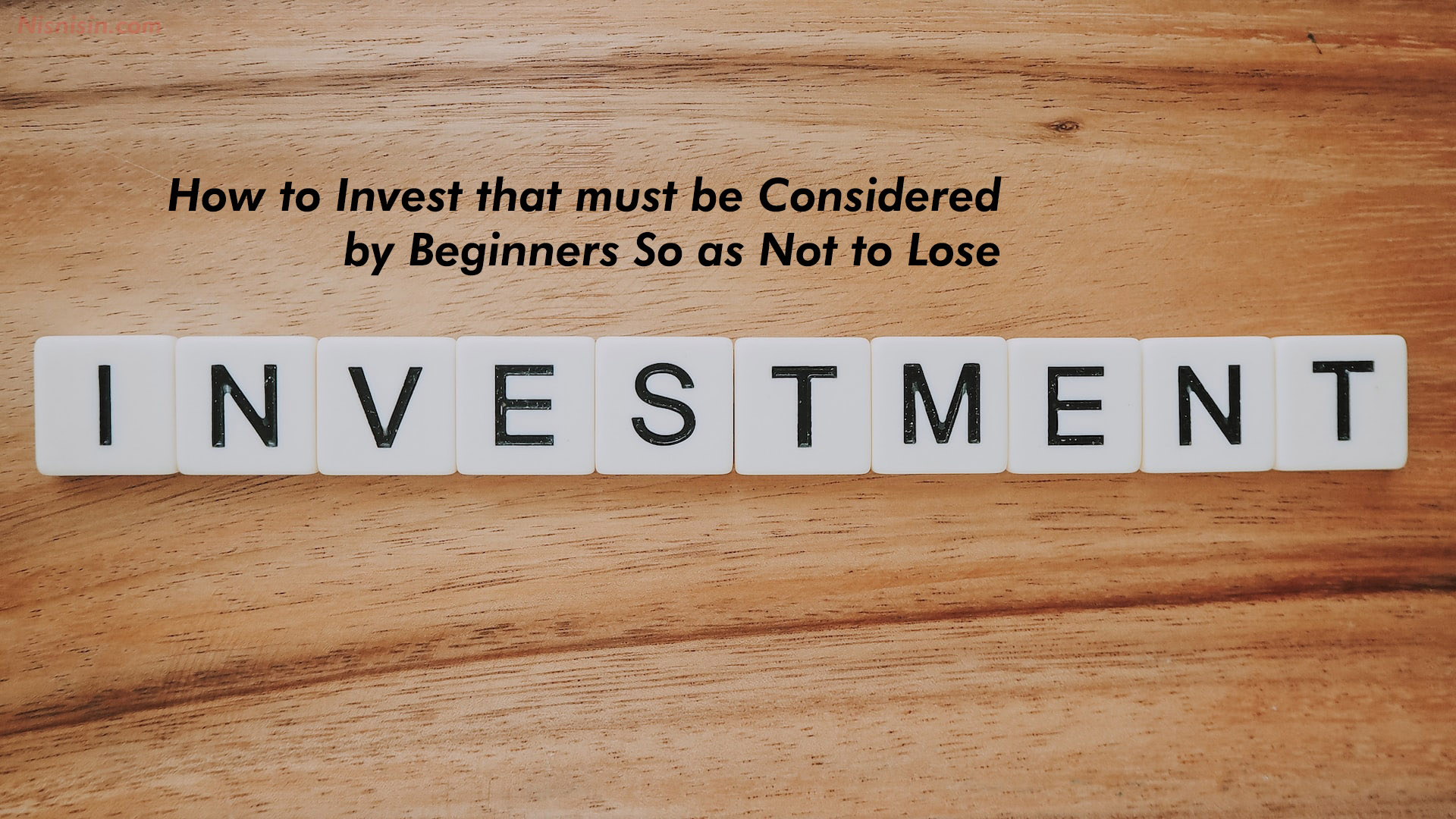Nisnisin – Investing is a critical aspect of financial planning that can provide significant returns over time. However, it also comes with an equal amount of risks, which can be intimidating for beginners. Investing wisely requires careful consideration, patience, and a clear understanding of the in-vestment landscape. In this article, we will discuss in detail some of the investment strategies that beginners should keep in mind to avoid losing money.
1. Determine Your Investment Goals
Before making any in-vestments, it is important to determine your investment goals. Ask yourself, what are you in-vesting for? What are your in-vestment objectives? Are you looking to in-vest for the short-term or long-term? Do you want to focus on capital growth or income?
2. Understanding Investment Risks
All in-vestments carry risk, including safe in-vestments such as bank deposits. However, risks can be minimized if we understand them well. Therefore, it is essential to learn about the risks associated with the type of in-vestment you plan to choose. There are market risks, company risks, and other risks that may affect your in-vestment. Understanding the risks will help you make informed decisions, reducing the risk of losing your money.
3. Diversify Your Investment Portfolio
Diversification is the key to minimizing investment risks. It means spreading your in-vestments across various instruments and assets. With diversification, you can minimize risk by splitting your in-vestments among different types of instruments and assets. For example, you can split your in-vestments between stocks, mutual funds, bonds, and deposits. This way, if one in-vestment incurs losses, you still have other in-vestments that can provide returns.
4. Do Research Before Investing
Before investing, research the company or in-vestment instrument you plan to choose. Learn about the company’s performance, management background, and the latest market trends. This will help you choose an in-vestment instrument with low risk and high potential returns. Always remember that the more you know, the better your in-vestment decisions will be.
5. Use Professional Services
If you still find it difficult to choose the right type of investment, you can use professional services such as financial consultants or in-vestment managers. They can help you choose the type of in-vestment that is most suitable for your risk profile and in-vestment objectives. Professional services can be expensive, but they can save you money in the long run by helping you make informed in-vestment decisions.
6. Long-Term Perspective
Investing is a long-term strategy. Therefore, do not be swayed by short-term fluctuations in the market, as they can cause unnecessary panic and lead to poor in-vestment decisions. Keep a long-term perspective, stick to your in-vestment plan, and adjust it as necessary. Be patient, as in-vesting takes time to produce returns. It is essential to remember that in-vesting is not a get-rich-quick scheme but a long-term financial strategy.
7. Keep Emotions in Check
Emotions play a significant role in investing, and it can be easy to get caught up in market hype and hysteria. However, emotions can cloud your judgment and lead to impulsive in-vestment decisions. Therefore, it is essential to keep emotions in check while in-vesting. Stick to your in-vestment plan, remain objective, and avoid making impulsive decisions.
8. Monitor Your Investments
After making an in-vestment, it is important to monitor it regularly. Keep track of the company’s performance, market trends, and other relevant factors that may affect your investment. Review your portfolio regularly, and if necessary, adjust it to reflect changes in your in-vestment objectives, risk tolerance, or market conditions.
Conclusion
In conclusion, in-vesting is a critical aspect of financial planning that can provide significant returns over time. However, it also comes with an equal amount of risks. To avoid losing money, beginners should keep in mind some in-vestment strategies such as determining in-vestment goals, understanding investment risks, diversifying their in-vestment portfolio, doing research before in-vesting, using professional services, having a long-term perspective, keeping emotions in check, and







